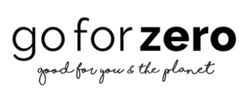Your Cart is Empty
**FREE (PLASTIC-FREE) SHIPPING OVER $89 IN AU | $9.95 FOR AU ORDERS BELOW $89**
Menu
-
- BRANDS
- New
-
A - F
- Aleph Beauty
- Amavasya Healing Store
- Baby Quoddle
- Banksia Pods
- Bare and Boho
- Bear & Kind
- Bearded Chap
- Beauty and the Bees
- Bee Green Wraps
- BioTuff
- Brightberry
- Buchi Brew Co
- Byron Bay Detox
- Chubby Bee
- Coconut Bowls
- Core Skincare
- Desert Shadow
- Downunder Wash Co
- Earth Greetings
- Eco Coconut
- Eco Art & Crafts
- Eco Max
- Eco Modern Essentials
- Eco Toothbrush
- Ecyo
- Eden Health Foods
- Ethique
- Ever Circle
- Ever Eco
- E.sup
- Femme Organic
-
G - N
- Gentle Habits
- Go for Zero
- Goodeau
- Good Change Store
- Good Cuppa
- Green Grip
- Haakaa
- Here and After
- Honeybee Wraps
- Honeysticks
- Ilo Wellness
- IME
- Jack n' Jill
- Kayu & Co
- Kelpy Bone
- Kiin Baby
- Kooshoo
- Laminated Cotton Shop
- Left-handesign
- Love Beauty Foods
- Magic Earth
- Mika Creations
- Miod
- My Mimi
- Natural Rubber Soother
- No Nasties
- Noosa Basics
- Notely
- Nuebar
- Nutra Organics
- Nurtur Tea
-
O - S
- One Chew Three
- Paper Saver
- Patch
- Planet Revive
- Pleasant State
- Poppy and Daisy Designs
- Raw Medicine
- Resparkle
- Retro Kitchen
- Rosie Lou
- Rustic Peppermint
- Salty Aura
- Saver Sleeve
- Scoop Whole Beauty
- SealPod
- Shampoo with a Purpose
- Sileco
- Solid Oral Care
- Sow n Sow
- StokedNZ
- Strap
- Stray Willow
- Sunbutter
- Surfmud
-
T - Z
- Tappwater
- That Red House Soapberries
- The Australian Natural Soap Company
- The Fabric Comb
- The Glitter Tribe
- The Keeper
- The Loose Tea Company
- The Naturool Co
- The Physic Garden
- The Swag
- The Tooth Faerie
- Thrive Tallow
- Togo Sun
- TOMbag
- TOM Organics
- Tooletries
- Urban Composter
- Urban Greens
- Urthly Organics
- Veggie Saver
- Viva La Body
- We Might Be Tiny
- Winki Zinc
- Woohoo
- Wotnot
- ZeroCare
- Zone Yoga
- 📚 15% off back to school & work
- SKINCARE & MAKEUP
- BATHROOM
- HOME
- FAMILY
- Zero Waste packs & Gifting
- SALE
- BLOG
- ABOUT US
-
- Login / Subscribe
-
Australia (AUD $)

**FREE (PLASTIC-FREE) SHIPPING OVER $89 IN AU | $9.95 FOR AU ORDERS BELOW $89**

The Top 7 Chemicals to Avoid in Your Cleaning Products - Let's Clean It Up!
April 14, 2024 5 min read
Even though we're more conscious of what we eat and put on our skin, many of us haven't considered the ingredients lurking in our cleaning products. So let's take a closer look at cleaning products because, just like the fragrance industry, the cleaning industry is very, very relaxed when it comes to testing or disclosing its ingredients.
With a staggering 17,000 petrochemicals available, only 30 percent of have been tested for their effects on human health and on the environment. Here in Australia, we spend a whopping $2 billion annually on cleaning products, while more and more studies suggest they may make us sick.
More recently, supermarket shelves started to overflow with "eco-friendly" and "natural" options, but are they truly safe? These terms are not regulated, meaning they do not hold the manufacturer to any industry standard. They are used to appear less toxic, but these deceptive labels boasting "natural" ingredients often hide a harsh chemical reality.
Let’s dive in and expose 7 hidden toxic ingredients to avoid in common household cleaners as well as safe options for a clean and healthy home without sacrificing our well-being or the planet.
The top 7 chemicals to avoid in your cleaning products
1. BLEACH
Different types of bleach are available, with chlorine bleach being the most common in mainstream cleaning products.
- Why is it in our cleaning products? Chlorine-based bleach has a strong disinfecting and whitening power. It contains sodium hypochlorite as the active ingredient.
- What mainstream products do you find it in? Chorine bleach can be found in disinfecting agents, laundry detergents, degreasers, dishwashing detergents, mildew and mould removers, and toilet bowl cleaners.
- What is the potential health impact? When chlorine bleach enters the body through breathing, swallowing, or skin contact, it reacts with water to produce acids. The acids are corrosive and damage cells in the body. Bleach can irritate the eyes, skin, and lungs and chemically burn human tissue. It can be very toxic when inhaled, and difficulty breathing and bronchitis are some of the severe problems that you may face if you use it regularly. It can cause asthma and make it worse in some who already have asthma.
2. ARTIFICIAL FRAGRANCES (PHTHALATES)
This is one of the most common and harmful chemicals in your products at home. Thousands of chemicals, including phthalates, are used to give cleaning products their scent. These artificial fragrances are listed on your products as "Fragrance" or "Parfum or Perfume."
- Why is it in our cleaning products? It boosts or hides the fragrance of cleaning products.
- What mainstream products do you find it in? Almost every single product we own, unless it is fragrance-free. So your dish soap, laundry detergents, fabric softeners, glass cleaners, air fresheners, etc.
- What is the potential health impact? The chemicals in synthetic fragrances are linked to hormone disruption, including reduced sperm count in men. It can trigger allergies, migraines and asthma symptoms. They are also linked to hormonal abnormalities, thyroid disorders and birth defects.
What can you do? Avoid (cleaning) products with Perfume/Fragrance, Phthalate, DEHP, DBP and DEP listed in the ingredients. Look for naturally scented cleaning products or fragrance-free products. Did you know every product at Go For Zero is naturally scented? And we're proud of it! We are so passionate about the impact of artificial fragrances that we wrote a blog about it here too.
3. SODIUM LAURYL SULPHATE (SLS) AND SODIUM LAURETH SULPHATE (SLES)
- Why is it in our cleaning products? It is a surfactant used to make products foamy and remove oil stains.
- What mainstream products do you find it in? It is commonly found in dishwashing and laundry detergents, and toilet bowl cleaners. However you will find it in a lot of foaming personal care products too.
- What is the potential health impact? It accumulates in body tissue after prolonged use, and can cause eye and skin irritations.
What can you do? Avoid Sodium laureth sulphate, sodium lauryl sulphate, ammonium laureth, sodium n-dodecyl sulphate, etc., in store-bought cleaners. Opt for natural dishwash detergents, laundry products, and toilet cleaners.
4. AMMONIA
Ammonia is found in numerous store-bought cleaners like Windex. It is typically colourless with a distinct pungent odour.
- Why is it in our cleaning products? It's effective at dissolving grease and grime and leaves surfaces streak-free.
- What mainstream products do you find it in? Window cleaners, drain cleaners, toilet cleaners, bathroom cleaners, oven & micro-wave cleaners, stainless-steel cleaners, car polish, and all-purpose cleaners
- What is the potential health impact? Irritate eyes, skin, throat and lungs. Individuals with asthma or respiratory conditions are particularly vulnerable to its effects, with prolonged exposure potentially leading to chronic bronchitis and asthma development.
What can you do? Opt for ammonia-free glass and all-purpose cleaners here.
5. TRICLOSAN
Triclosan is a chlorinated organic chemical compound known for its antibacterial and antifungal properties.
- Why is it in our cleaning products? Triclosan is included in cleaning products for its ability to effectively kill germs and bacteria, making it a popular choice for antibacterial formulations.
- What mainstream products do you find it in? Household products, including dishwashing detergents, hand soaps, disinfectants, wipes, etc
- What is the potential health impact? it is considered an endocrine-disrupting chemical, capable of interfering with hormonal balance. Prolonged exposure to Triclosan has been linked to hormonal imbalances, respiratory problems, skin allergies, and worsening of asthma symptoms.
What can you do? Opt for natural dishwashing liquids & natural foaminghand washes.
6. PARABENS (or isothiazolinones use as a replacement for parabens)
- Why is it in our cleaning products? Used to increase shelf life and prevent the growth of bacteria and fungi.
- What mainstream products do you find it in? Many mainstream cleaning products
- What is the potential health impact? It can affect our immune system, cause eczema, and irritate our nervous system.
What can you do? Avoid Butylparaben, methylparaben, isoparaben, and propylparaben. Or its replacements benzisothiazolinone, methylisothiazolinone, methylchloroisothiazolinone and opt for natural cleaning products.
7. MEA, DEA, TEA
(Monoethanalomine, diethanolamine and Triethanolamine)
- Why is it in our cleaning products? They are used to remove stubborn stains and grime from various surfaces effectively.
- What mainstream products do you find it in? Dish soaps, Laundry detergents, all-purpose cleansers, glass cleaners, floor cleaners, etc.
- What is the potential health impact? MEA is highly corrosive and can cause damage to the skin, lungs, and airways, as well as being neurotoxic and carcinogenic with repeated exposure. DEA and TEA can irritate the skin, eyes, and respiratory tract and have been linked to hormone disruption and a potentially increased risk of cancer. Additionally, both DEA and TEA can react with nitrates present in cleaners to form nitrosamines, which are carcinogens that readily penetrate the skin. These chemicals are considered toxic enough in the European Union to be banned from personal care products and cosmetics due to their potential health hazards.
What can you do? Look for natural options such as dish soaps, laundry detergents, all-purpose cleansers, glass cleaners and floor cleaners here.
Where do we go from here?
Knowledge is power, so use this guide to check your cleaning products. If the ingredients are not listed, reach out to the manufacturer to ask about the ingredients. I generally tend to stay away from any products without ingredients because manufacturers with clean ingredients are proud of them and will list them.
This blog focused on the impact on our health but at Go For Zero we don’t compromise on health but not on the health of our planet either. Harsh ingredients make their way into our water, so it is also important for our planet and wildlife to cut harsh ingredients, as well as the single-use plastic throwaway bottles they are often packaged in. Listing cleaning products as “100% recyclable” is one of the most "eco-friendly" greenwashing terms out there.
Have a look at our safe, clean and waste-free products. From natural dish liquid alternatives and laundry alternatives, to your Windex replacements and Palmolive handwash swap. Please never hesitate to reach out if you have any questions!
With love,
Ellie
Leave a comment
Comments will be approved before showing up.
Recent Articles
- Refillable Makeup Explained: A Beginner’s Guide to Toxin Free, Eco Friendly Beauty December 19, 2025
- Our Top Aussie Eco Holiday Spots for Sustainable Travel December 14, 2025
- 5 Ways to Avoid Microplastics in Your Drinks December 05, 2025
- Ditching the Nasties: How to Keep Microplastics and PFAS Out of Your Water December 05, 2025
- Gift Wrapping Guide: How to Responsibly Dispose of Gift Wrap and 6 Zero-Waste Wrapping Ideas! December 05, 2025
Subscribe
Sign up to get the latest on sales, new releases and more …
